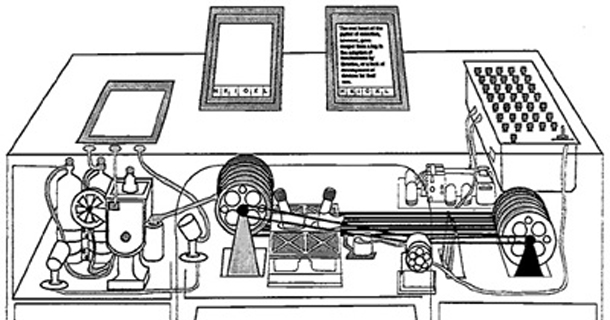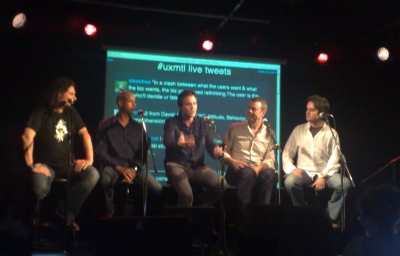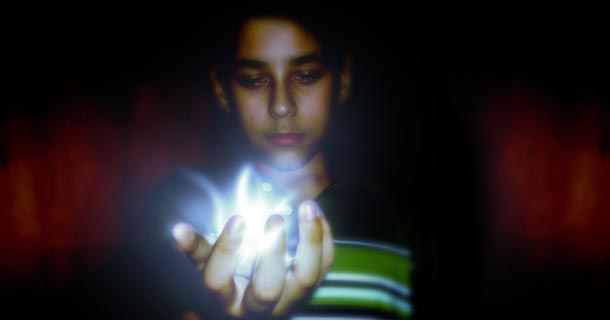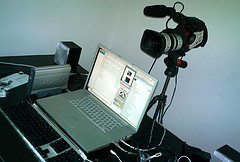It’s common practice today to think that the solution to every problem is to be found in technology. This video is a concept video from the 2009 Challenge your World competition reminding us to not to fall into the trap of that kind of thinking.
Read more »
All items by Alex Bowyer
This short (20 minute) film, “Play”, by David Kaplan and Eric Zimmerman, explores a world where the lines between augmented reality, virtual worlds and computer games have become so blurred that people begin to lose track of reality. Drawing on themes explored by films like The Matrix, Surrogates and Total Recall, this film is fascinating, thought-provoking and just a little disturbing.

Canadians spend more time online than watching TV, according to new research. Not surprising, since most of the content we encounter is born online. Blogs, e-mails, tweets and YouTube videos wouldn’t exist without the Internet. You need a connection. And since it’s largely just computers and phones that have Internet connectivity, this often means digesting this digital content on devices that weren’t designed for consumption. Read more »

In this Sep 2009 episode of NPR’s On Point, Tom Ashbrook interviews Gordon Bell and Jim Gemmell, authors of the new book “Total Recall: The E-memory revolution”. Gordon Bell has, for over ten years, been digitizing his entire life as part of the MyLifeBits project, inspired by the concept of a “Memex” (pictured left), put forward by Vannevar Bush in 1945. Bell outsources much of his memory to computer systems designed to make him more effective. The book (and the podcast) explore the ways in which this e-memory revolution has already begun and will transform aspects of society from privacy and healthcare to learning and extra-marital affairs.
Listen to the episode (streaming audio provided by NPR).
Image credit: Memex image by p373 on Flickr
This concept video demonstrates a powerful application of augmented reality. With technology that exists today, retailers could bring their wares to your living room, solving one of online shopping’s biggest drawbacks – a flat 2D representation is often not enough to make product decisions. A 3D online furniture store could allow you to try out different furniture in the real physical space of your living room with minimal effort – something that both physical and online stores can’t currently do. You can read more about the video and how it was made on phedhex’s blog.

Back in mid-2008, Twitter was just another Web 2.0 application. Industry watchers were beginning to take notice of its million or so users and speculate if it might be the start of something bigger, but most people hadn’t heard of it or didn’t “get it”. Here at Bitcurrent we pondered the rise of microblogging and the scaling problems ahead, noting a few teething problems along the way.
Towards the end of 2008, people outside of tech circles began to take notice, especially when it became a key form of communication during the Mumbai terror attacks in November. In December it became clear that Twitter was not just another social site, but a protocol for a new form of communication. By the end of the year, people were exploring all sorts of new uses for Twitter, and the Twitter pantomime was born.
But 2009 was the year that Twitter really took the world by storm.
Read more »

Backchannels are all the rage at tech events these days, connecting presenter and audience like never before. They allow audiences to get more value from a presentation by communicating with each other about it. And the audience can feed back to the presenter, which helps him stay on track and know that he is being understood.
But there’s a point where a backchannel goes beyond adding interactivity to an event and begins to undermine the event itself. In November, I witnessed this at the launch of UXMTL, a community for user experience design in Montreal.
Twitter has made setting up backchannels trivially easy — with or without the consent of conference organizers — since anyone can start a Twitter backchannel simply by using a hashtag. Unlike Google Moderator or Backnoise, no specialized software is needed. At UXMTL, the event organisers simply announced that audience members should use the hashtag #uxmtl on Twitter, and all tweets for that tag were displayed on a large screen behind the panelists, using Twitterfall. For me, this completely changed my experience of the event, both as an audience member and a backchannel contributor.







 @
@ Tags:
Tags: 









 Like all images on the site, the topic icons are based on images used under Creative Commons or in the public domain. Originals can be found from the following links. Thanks to
Like all images on the site, the topic icons are based on images used under Creative Commons or in the public domain. Originals can be found from the following links. Thanks to